Rice is actually one of the most highly consumed staple foods worldwide, from Africa to Asia to Latin America. Reports show that it makes up about 16.5% of the global caloric intake, translating to more than 1.6 billion people, making it a highly regarded source of nourishment. It is prepared using various methods – open-pot boiling, using a pressure cooker, and even microwaving.
This article will focus on the use of rice cookers. Continue reading to learn more!
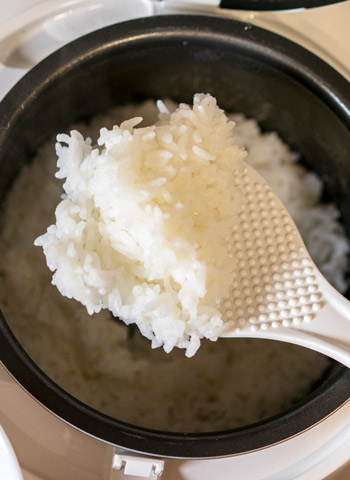
What is a rice cooker?
A rice cooker is an automated kitchen appliance typically designed to steam or boil rice, with its cooking mechanism mainly consisting of three components: a heat source, cooking bowl, and thermostat or heat sensor to regulate the temperature.
When was it invented?
A rudimentary version of the rice cooker, which was essentially a rectangular wooden box with two electrodes attached at each end, was sanctioned by the Japanese Imperial Army in 1937. However, this rice cooker was not suitable for home cooking and was considered unsafe because of the high risk of electrocution.
What is the history behind it?
Origins
Rice cookers, a term first applied to manual/non-automated rice-cooking utensils, were created to remove the need to constantly visually monitor rice as it cooked, which was necessary to prevent it from getting burned. These electricity-supported automated rice cookers were created in Japan.
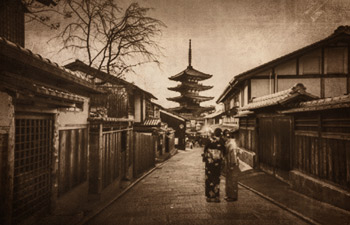
Development

This first iteration of the rice cooker was deemed impractical for wide use. In 1945, another version was developed and manufactured by the Japanese company Mitsubishi Electric Corporation.
Its design was no longer rectangular-shaped or made out of wood. Instead, the main components consisted of an aluminum pot with a heating coil inside. The downside to this iteration was the lack of an automatic turn-off feature, which caused the rice to be ‘cooked’ continuously and requiring constant monitoring.
After much research and trial-and-error attempts by various makers, the first commercially successful rice cooker was invented by Yoshitada Minami for Toshiba Electric Corporation in 1956. Their model was more practical and consisted of a triple-chamber that provided heat insulation via air layers, thus eliminating the issue found in the 1945 model by Mitsubishi Electric Corporation.
However, the model that Toshiba Electric Corporation eventually sold commercially to the market adopted a double-chamber indirect cooking method. Using this model involves putting rice into a rice pot, and the pot is placed into a container filled with water, hence the term ‘double-chamber.’
The term indirect cooking method, meanwhile, indicated the way rice is cooked indirectly: the appliance generates the required heat, causes the water to boil, increases the temperature of the rice pot, and results in cooked rice. In the process, the increase in temperature activates a bimetallic thermostat that automatically turns off the cooker and stops the cooking process.
Designs

Over time, rice cookers became more efficient and precise. The popularity of high-end models with unique materials also grew.
The bimetallic thermostat was slowly replaced in the 1980s with microprocessors in high-end electric rice cookers that help regulate the cooking process. These microprocessors were also combined with an electric timer and a battery-powered memory. There were also high-end electric rice cookers that incorporated induction heating, which controlled heat more precisely.
By the 1990s, many new features were introduced and tested, including cooking settings that allowed cooking other varieties of grains, cakes, and bread, provided a steam function, and allowed users to select their own desired cooking results.
By the 2000s, deluxe rice cookers were incorporating uncommon materials and included models with inner cooking bowls made from non-metallic components, which aided in improving the taste of cooked rice. Other models had cooking bowls made of hand-carved pure carbon, which was developed by Mitsubishi in 2006 in an effort to launch a better heat-generating profile than induction heating. The latter became one of the most expensive rice cookers on the market at the time, at over $1,400, but the hefty price tag did not hinder customers from buying it.
This set the trend for more premium or very high-end rice cookers. By this time, one can now find rice cookers that come with rice bowls coated with ceramic-iron, copper, or even diamond!
How does it ‘know’ when the rice is done cooking?
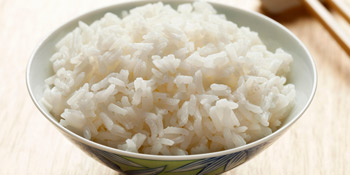
Since the rice cooker was made to remove the need for monitoring rice as it cooked, creators invented a function that, in some way, ‘alerts’ the appliance that the rice has been fully cooked, thus systematically instructing it to switch off its heat source and end the cooking process.
Technically, the ‘alert’ is triggered by when the inner pot’s temperature has arisen to boiling water point, 100° C, which is typically when water would have boiled away, leaving behind cooked rice. Though there are various ways for a rice cooker to pick up that the inner pot has reached that temperature, the original patent was that a contact magnet would be used to keep a switch, keeping the circuit to the heating element, closed.
This is because when contact magnets get hot enough they temporarily lose their magnetic property. A permanent magnet, on the other hand, would lose its magnetic property entirely. Therefore, when water boils away, the only items that continue to be heated are the inner pot and cooked rice, which would cause the internal temperature to rise above 100° C. The contact magnet then loses its magnetic properties when it gets too hot, causing it to let go of the switch, disconnecting the circuit to the heating element, and putting it into warm mode. The contact magnet later regains its magnetic property from a permanent magnet also installed in the appliance.
Other Popular Articles on ComproGear
We research the rose toy the clit toy from tiktok everyone is talking about.
Using a car air purifier this means in addition to stopping allergies it helps clean your car of dust and debris.
Bachelorette party penis straws more party supplies besides simple confetti.
How is a rice cooker cleaned?
Cleanup of rice cookers is easy and a unit typically has three standard parts that can be cleaned.

Inner rice pot
- Take the inner pot out and fill it with dishwater.
- Leave the filled pot for at least half an hour to allow any remaining rice, that had been sticking to the inside of the pot, to loosen.
- Discard the contents of the pot.
- Wash the inner pot with clean water and dish soap using a sponge or washcloth.
- Rinse and dry the inside and outside of the pot completely.
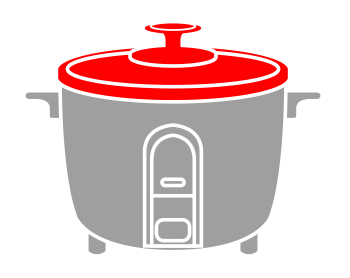
Underside of the lid
- Wipe the underside of the lid with a damp cloth.
- Dry it with a clean cloth.
- Clean the underside after each use.
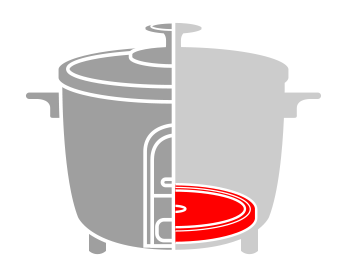
Heating plate
- Once the heating plate has cooled down completely, wipe it with a damp cloth.
- Dry it with a clean cloth.
What are the different types available nowadays?
There are typically four types or categories of electric rice cookers on the market:
Standard (no-frills and affordable)
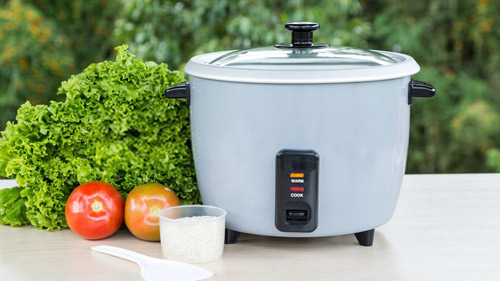
This type is really stripped down to the basics and has the required simple functions to make decent quality rice and keep it warm. It is usually provided with a detachable power cord and non-stick inner rice pot, and the unit automates the cooking process by switching to ‘warm mode’ once the rice is done cooking. They are simple to operate as the user simply needs to add rice and water into the inner rice pot and press a button to start the cooking process. Standard rice cookers are commonly available in various sizes and fairly affordable.
Improved with additional features
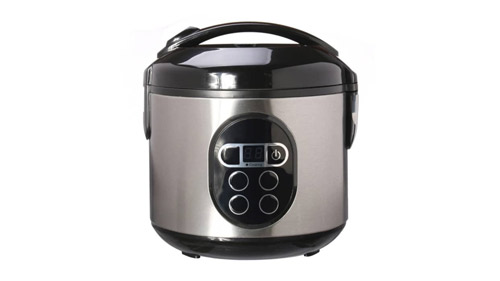
This is essentially a standard rice cooker with a few additional features, such as having settings that allow the user to choose the varieties of rice that will be cooked, steaming options, warming and extended warming, and/or a built-in digital countdown timer. The rice quality is slightly better than the quality made from standard types, albeit these units are still relatively affordable.
Advanced multifunction cookers
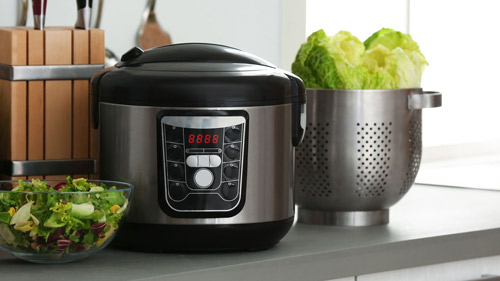
These units are more advanced models than their predecessors and, therefore, encompass all their features with a few more. They can also cook more than one type of rice in various forms, such as sushi rice or rice porridge. Their models incorporate expanded control technology, detachable lids or LED screens, or control panels. The quality of rice tends to be even better than the quality made by improved rice cookers. With more features and increased sophistication, their price tags are likely to be in the mid-high range.
Top-of-the-line induction cooking
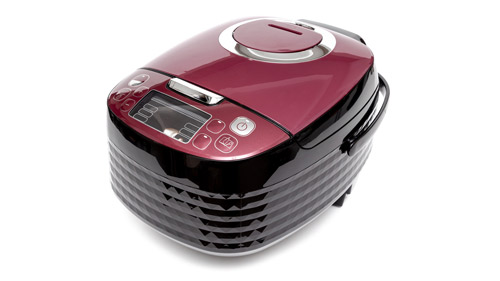
Lastly, there is a category of models considered high-end as they are essentially highly technological kitchen appliances. It embeds multiple rice cooking settings, for varieties of rice like jasmine rice and sushi rice, and is capable of various cooking tasks. Where a standard rice cooker uses thermal induction to transfer heat to the inner rice pot, an induction heat rice cooker uses a magnetic field that transfers more constant heat on a more consistent basis to the inner pot. Their main characteristics include digital control pads featuring various functions and cooking settings; warming and extended warming; produces high-quality rice and consumes more energy. As a result, its price is relatively high.
How different are they from pressure cookers?

Pressure cookers, as the name implies, are designed to maintain pressure in the inner pot by having a sealed lid that prevents steam from escaping. This makes the appliance ideal for tenderizing meat that would be tough to do with a rice cooker, for instance. It can also cook whole vegetables and roasts. It is a more efficient way of cooking food, requires lesser liquids, and allows the temperature to go above the boiling point of water. With multi-functional pressure cookers available on the market, this means that they are capable of cooking rice as well, which basically removes the need of having a separate rice cooker.
What are their other uses?
Rice cookers are versatile appliances that can process other food items such as:
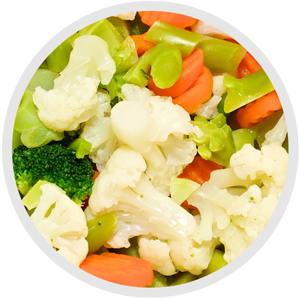
Steam vegetables
This can be done if the unit comes with a steamer rack, in which ingredients or raw food that are steam-friendly, such as vegetables, fish fillets, chicken breasts, shrimps, can be put in.
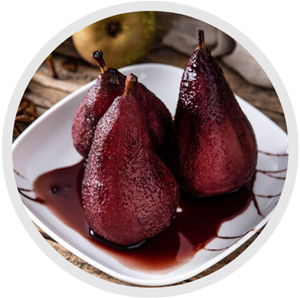
Poach fruit
The inner pot can also be used to put cut fruit in, mixed with liquids such as water, wine, or juice. The heat conducted can also be ideal for making applesauce or other fruit sauces.
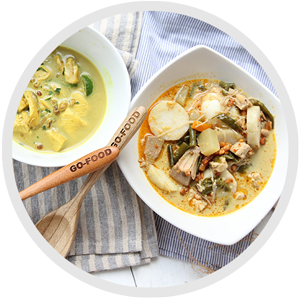
Slow cookers for stews or soups
Rice cookers featuring a slow-cooker function are capable of cooking stews or soups, which can be done simply by putting in the necessary ingredients and liquids, such as broth or water, into the inner pot or special bowl provided by the model.

Prepare oatmeal or porridge
Another cooking feature is for oatmeal or rice porridge which can be kept warm with the ‘warm mode’ commonly available in rice cookers.
What are the best types on the market?
Aroma Housewares ARC-914SBD Rice Grain Cooker and Food Steamer
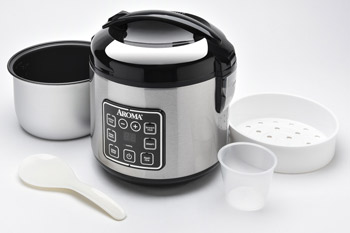
This 8-cup model might be a better deal than the one mentioned above as it includes a steamer tray, all for a price of around $30. It is also extremely easy to operate, does not occupy much space, incorporates a delay-start timer which can be set for up to 15 hours in advance, has a digital timer, and includes presets for brown rice and white rice.
Hamilton Beach Digital Simplicity
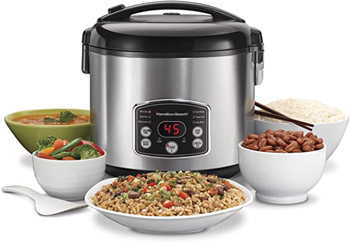
This rice cooker is quite similar to the one mentioned above, as it also includes a steaming basket and a delay-start timer. Its timer can be set for up to 15 hours in advance as well. However, it boasts a 4 to 20 cup cooker capacity; greater cooking versatility as it supports all kinds of white rice, quick rice, and whole grains; and more functions such as ‘Heat/Simmer’, which is used for pasta, beans, soups, and one-pot meals, ‘Steam Cook’, and ‘Hot Cereals’, which is suited for oatmeal and cream of wheat. All these great features come at a price tag of approximately $50.
For versatility: Gourmia GRC970 11-in-1 Digital 20-Cup Rice Cooker
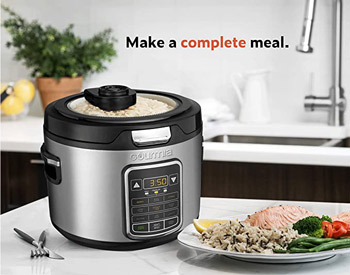
This model, named the Gourmia TenderRender 3000, is a highly beneficial appliance as it is capable of cooking meals for breakfast, lunch, dinner, and even dessert that comes at around $45. This rice cooker also has a 15-hour delay timer and comes with a handful of accessories, such as a measuring cup, spatula, clear glass removable lid, and steam tray. It is ETL-certified which ensures that users are operating a safe appliance. The multicooker is great for preparing large batches as it has a capacity of up to 20 cups of rice and highly convenient due to its One Pot Meal feature, which enhances a user’s cooking experience by providing them various innovative functions such as a steamer and slow-cooker all packed into one machine.
For high quality: Zojirushi NP-NVC10 Induction Heating Pressure Rice Cooker

This particular cooker model from Zojirushi packs a hefty price at between $350 to $500 and incorporates advanced fuzzy logic technology with artificial intelligence. What this means is that this machine, with frequent use over time, ‘learns’ and adjusts its cooking cycle and achieves perfect results each time its users cook rice.
The inner pot is made of platinum-infused nonstick material, which is claimed to change the water quality and improves absorption into the rice for better taste. It adopts superior induction heating technology and an induction heating pressure system. This means that the cooking temperature within the inner cooking pot is more uniform and precise, and the unit prevents air or liquid from escaping, which keeps the rice soft for longer periods compared to regular cooked rice.
It also comes with accessories such as a rice spatula, a spatula holder, and two measuring cups- one for regular rice and the other for rinse-free rice. It boasts the capability to cook any type of rice imaginable, including brown rice, sushi rice, rice that has been mixed with seasonings, rice porridge, and even GABA brown rice. The last type is a newly discovered way of cooking brown rice to ‘activate’ an amino acid called gamma-aminobutyric acid which is found in brown rice and believed to help lower blood pressure, improve kidney function, and relieve stress.
Is using a rice cooker better than cooking manually?
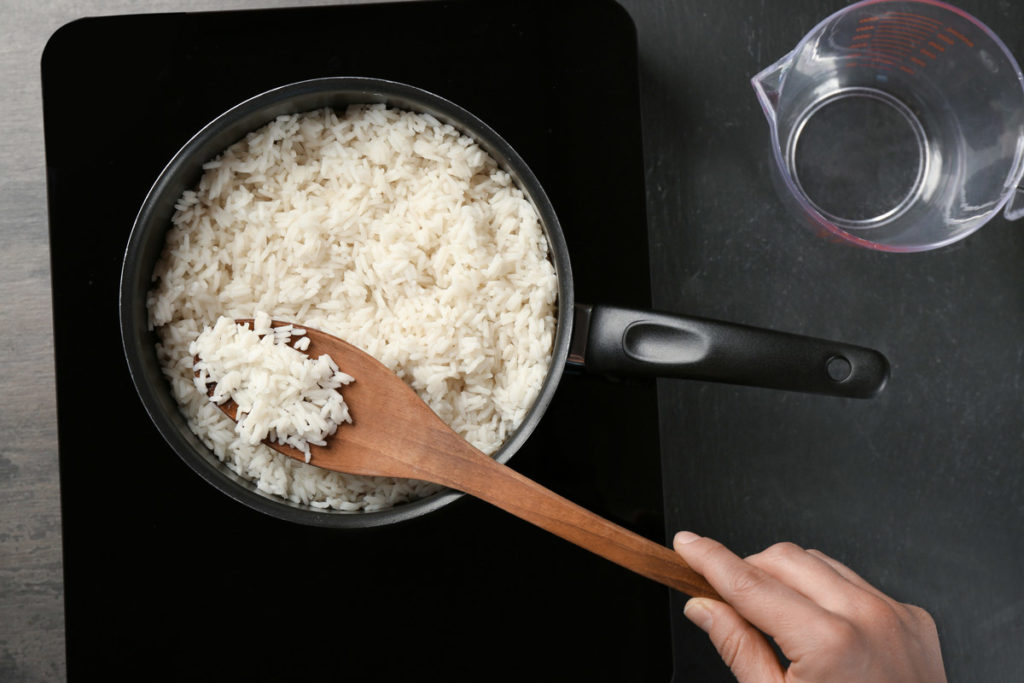
The opinion as to whether one is better than the other may vary from person to person. Modern stoves now come with a timer, better heat control, and settings that allow one to manually cook rice, using heavy cast iron or earthenware pots. The pros are many but there are also cons to owning rice cookers.
The pros to using a rice cooker:
- It automatically shuts off and prevents burning and over-cooking or under-cooking.
- It helps keep your favorite grain warm for hours.
- It does not require much preparation.
- Several models can even be used to cook other foods.
- Seriously saves time for the user, particularly when one has many things to do.
- Enables cooking in small batches or large quantities easily.
On the other hand, several cons include:
- Cannot function without an electricity source.
- Adequate space needs to be available to place the rice cooker.
- Proper maintenance is needed if one part malfunctions or goes missing, which disrupts the entire cooking process. The entire appliance becomes redundant and needs repair or replacement.
- Can be costly, particularly high-end ones.
Is owning a rice cooker really necessary?
Simply put, this depends on how much rice one consumes routinely and the time and effort one is willing to put into cooking rice. The option of whether or not to own one is up to the consumer, their preferences, and budget.
Conclusion
With many kinds of rice cookers available on the market, one can easily find a model that fits one’s needs and budget. These gadgets have definite advantages over cooking rice manually, such as being able to prevent burning and maintaining the food temperature long after the rice is done. Households that own a rice cooker would also greatly benefit if the family consumes rice frequently because of its convenient features. Lastly, newer models sport other convenient and versatile features, such as a steamer for vegetables. Many like the Zojirushi NP-NVC10 can now replace slow cookers for the making of stews and have become ever-smarter and more efficient.
References
- “What Are the World’s Most Important Staple Foods?”, 2019, World Atlas, https://www.worldatlas.com/articles/most-important-staple-foods-in-the-world.html
- “Rice Cooker”, Wikipedia, https://en.wikipedia.org/wiki/Rice_cooker
- “Who invented the rice cooker?”, Quora forum, https://www.quora.com/Who-invented-the-rice-cooker
- “How does a rice cooker know when the rice is done?”, Quora forum, https://www.quora.com/How-does-a-rice-cooker-know-when-the-rice-is-done
- “How do you clean a rice cooker?”, Best Aroma Rice Cookers, https://www.bestaromaricecookers.com/faq/
- “Is a rice cooker superior to cooking rice manually?”, Quora forum, https://www.quora.com/Is-a-rice-cooker-superior-to-cooking-rice-manually
- “The circular evolution and history of Japanese rice cookers”, 2017, The Japan Times, https://www.japantimes.co.jp/life/2017/07/22/food/circular-evolution-history-japanese-rice-cookers/#.XxPjd5vivb0
- “What is the usefulness of a rice cooker?”, Quora forum, https://www.quora.com/What-is-the-usefulness-of-a-rice-cooker-1
- “Different Types of Electric Rice Cookers”, 2016, Pressure Cooker Portal, https://www.pressurecookerportal.com/different-types-electric-rice-cookers/
- “The best rice cookers for 2020”, 2020, Digital Trends, https://www.digitaltrends.com/home/best-rice-cookers/#:~:text=The%20best%20rice%20cookers%20for%202020%201%20Aroma,some%20nice%20features%2C%20right%3F%20…%20More%20items…%20
- “The Real Difference Between Rice Cookers and Pressure Cookers”, 2019, InstaPots, https://instapots.net/rice-cookers-vs-pressure-cookers-differences/
This page last updated June 30, 2022
